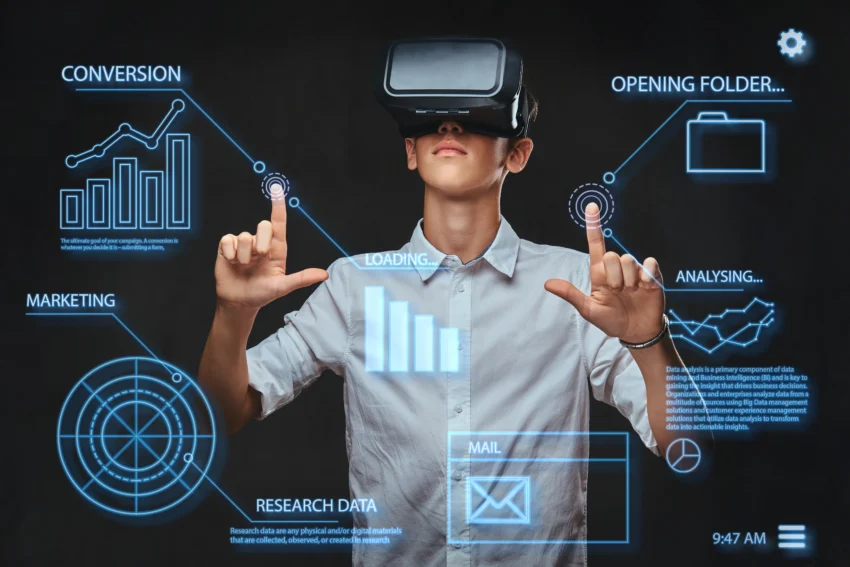Introduction
In the realm of artificial intelligence and machine learning, Computer Vision stands out as a revolutionary technology. By enabling machines to interpret and understand visual information from images and videos, Computer Vision bridges the gap between human perception and digital processing. From autonomous vehicles navigating busy streets to advanced medical imaging systems, the applications of Computer Vision are reshaping industries and daily life.
This comprehensive article explores the fundamentals, technologies, applications, challenges, and future prospects of Computer Vision, enriched with answers to frequently asked questions.
What is Computer Vision?
Computer Vision is a field of artificial intelligence (AI) that focuses on enabling computers to analyze, interpret, and understand visual inputs, such as images and videos, in a way similar to human sight. It combines various disciplines, including machine learning, pattern recognition, and image processing, to extract meaningful information from raw visual data.
Unlike traditional programming where explicit instructions are given, Computer Vision systems learn from large datasets to recognize patterns and make intelligent decisions based on visual inputs.
How Does Computer Vision Work?
The process of Computer Vision involves several key stages:
- Image Acquisition: Gathering raw image data through cameras, sensors, or video feeds.
- Preprocessing: Enhancing image quality by removing noise, adjusting contrast, or resizing.
- Feature Extraction: Identifying key features such as edges, colors, textures, or shapes.
- Object Detection and Recognition: Locating objects within the image and classifying them.
- Semantic Understanding: Interpreting the context and relationships between objects.
- Decision Making: Using the interpreted data to perform tasks or provide insights.
Modern Computer Vision relies heavily on deep learning techniques, particularly convolutional neural networks (CNNs), which excel at recognizing complex patterns in images.
Key Technologies Behind Computer Vision
- Machine Learning: Algorithms that improve automatically through experience and data.
- Deep Learning: A subset of machine learning using neural networks with many layers to model complex data representations.
- Image Processing: Techniques to enhance images and extract useful features.
- Object Detection Algorithms: Such as YOLO (You Only Look Once), SSD (Single Shot MultiBox Detector), and Faster R-CNN.
- 3D Vision: Using depth sensors and stereo cameras to perceive the three-dimensional world.
- Optical Character Recognition (OCR): Recognizing text within images.
Applications of Computer Vision
The versatility of Computer Vision means it is applicable across numerous industries:
1. Healthcare
- Medical Imaging: Detecting tumors, fractures, and abnormalities in X-rays, MRIs, and CT scans.
- Surgical Assistance: Real-time visualization to guide minimally invasive surgeries.
- Diagnostics: Automated analysis reducing human error and speeding up diagnoses.
2. Automotive Industry
- Autonomous Vehicles: Self-driving cars use Computer Vision to understand traffic signs, pedestrians, and other vehicles.
- Driver Assistance Systems: Lane departure warnings, collision detection, and parking assistance.
3. Retail and E-commerce
- Inventory Management: Automated tracking of stock using image recognition.
- Customer Analytics: Facial recognition for personalized shopping experiences.
- Cashier-less Stores: Real-time item recognition to enable seamless purchases.
4. Security and Surveillance
- Facial Recognition: Identifying individuals for access control and law enforcement.
- Threat Detection: Monitoring crowds and alerting for suspicious behavior.
- Video Analytics: Analyzing surveillance footage for anomalies.
5. Agriculture
- Crop Monitoring: Drone imagery to assess plant health and detect diseases.
- Yield Prediction: Analyzing field images to estimate crop production.
- Weed Detection: Targeted herbicide application to reduce chemical use.
6. Manufacturing
- Quality Control: Inspecting products for defects using automated vision systems.
- Automation: Guiding robotic arms in assembly lines.
Benefits of Computer Vision
- Increased Accuracy: Reduces human errors in visual tasks.
- Automation: Enables machines to perform complex tasks independently.
- Speed: Processes large volumes of images quickly.
- Safety: Enhances monitoring and early warning systems.
- Cost Efficiency: Reduces manual labor and associated costs.
Challenges in Computer Vision
Despite its advancements, Computer Vision faces several challenges:
- Variability in Lighting and Environment: Changes in lighting or background can confuse systems.
- Complexity of Real-World Data: Occlusions, distortions, and cluttered scenes complicate object detection.
- Data Requirements: Deep learning models require massive labeled datasets.
- Computational Resources: High processing power is needed for real-time applications.
- Privacy Concerns: Use of facial recognition and surveillance raises ethical issues.
Future Trends in Computer Vision
- Edge Computing: Moving vision processing closer to cameras for faster responses.
- Explainable AI: Making Computer Vision decisions more transparent.
- Multimodal Learning: Combining vision with other sensory data for better context.
- Augmented Reality: Enhanced real-world interactions using vision.
- Improved 3D Vision: Advances in depth sensing and 3D reconstruction.
Frequently Asked Questions (FAQs) on Computer Vision
1. What is the difference between Computer Vision and Image Processing?
Computer Vision focuses on understanding and interpreting images to make decisions, while Image Processing is about enhancing or transforming images without necessarily understanding their content.
2. How is Computer Vision used in self-driving cars?
It helps vehicles detect road signs, other vehicles, pedestrians, and obstacles to make safe driving decisions.
3. Can Computer Vision work in real-time?
Yes, with advancements in hardware and optimized algorithms, many applications like surveillance and autonomous driving operate in real-time.
4. What programming languages are commonly used for Computer Vision?
Python is widely used, thanks to libraries like OpenCV, TensorFlow, and PyTorch. C++ is also popular for performance-critical applications.
5. Is Computer Vision only about recognizing objects?
No, it also involves understanding scenes, tracking movement, detecting anomalies, and interpreting visual data beyond mere recognition.
6. How accurate is Computer Vision?
Accuracy depends on the model and data quality, but modern systems can achieve near-human or even superhuman performance in specific tasks.
7. What hardware is used in Computer Vision?
Cameras, GPUs for processing, depth sensors, and specialized chips like TPUs are common.
8. Are there ethical concerns with Computer Vision?

Yes, especially regarding privacy, surveillance misuse, and bias in facial recognition systems.
Conclusion
Computer Vision is a groundbreaking technology that allows machines to see, analyze, and respond to the visual world. It holds immense potential to transform industries ranging from healthcare to transportation and beyond. Despite its challenges, continuous research and innovation promise an exciting future where machines will become even more perceptive and intelligent.
